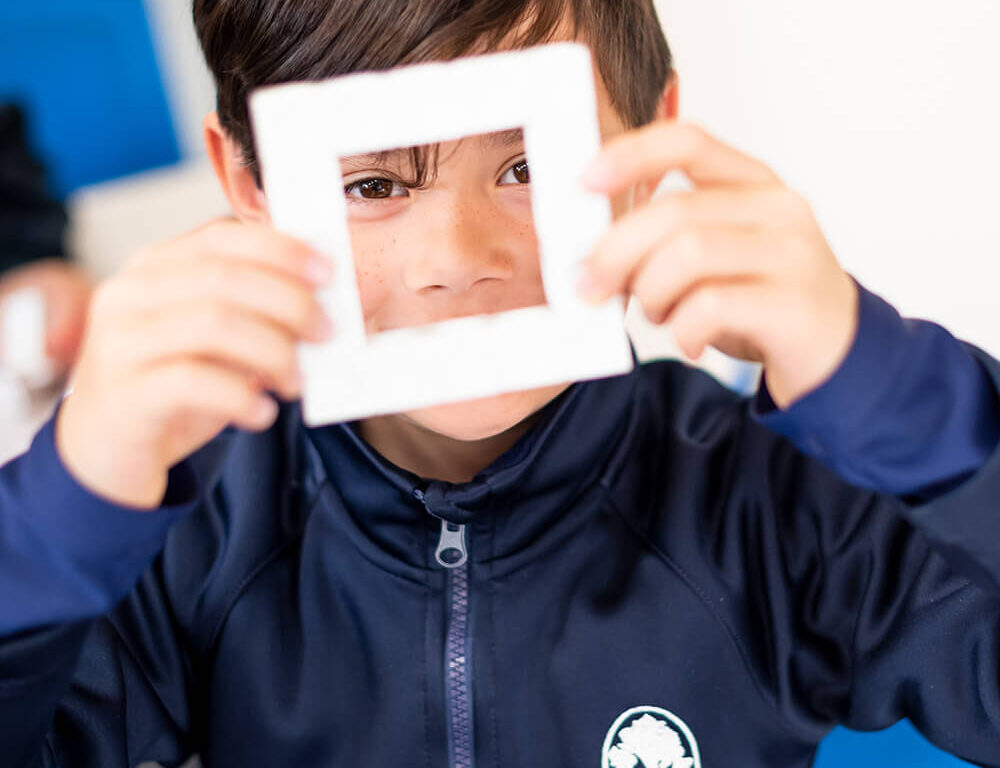Devonshire House Experts’ Talks Series
‘I Can’t Do It’ – Lessons in Resilience in Nursery
By Paula Szpakowski, Head of Devonshire House Nursery School

This article is written from my perspective as a parent and a teacher. I’m not a psychologist and by no means an expert, but over the years, I have accumulated a significant amount of information which has enabled me to help myself, and to support the children in my life. I hope that you find something useful here. (Skip to the end of the article for a list of strategies.)
As a parent struggling through the awe-inspiring complexities of child rearing, there are a few phrases that I found to be deeply affecting:
‘I can’t do it’, ‘I give up’, ‘I’m no good at this’.
The last thing any parent wants to hear is the sound of frustration, helplessness and anguish from a child attempting a task and facing (what they see as) insurmountable obstacles.
What are we doing wrong?
If you’re like me, you will have spent hours reassuring your little over-achiever that they are good enough, that they can do anything they set their mind to, gently reminding them about the wonderful grades they’ve achieved over the years. I became a ‘helicopter parent’ hovering around, protecting and shielding my child from tricky situations and general unpleasantness. Avoiding distress became paramount. These tactics simply didn’t work for me. And that is because I was inadvertently sending the wrong messages.
I believed that the ability to eagerly tackle challenges, learn from mistakes and have the tenacity to keep on trying was an inbuilt (enviable) personality trait. Only after years of teaching and training, have I come to realise that we, as parents and teachers, really do have the ability to instil resilience in our children – we just need to know how.
How to instil resilience?
The Mental Health Foundation defines resilience as our ability to cope with the normal stresses of life as well as being able to bounce back from crises.
In recent years, with the view to creating happy, resilient learners, schools have developed strategies to support children’s well-being by embracing evidence-based research from the fields of neuroscience and psychology.
We teach children that abilities are not innate, that instead, it is possible to improve through effort, learning, and persistence. This is a Growth Mindset and is an absolute staple in most UK classrooms. The growth mindset is supported by the concept of Emotional Literacy, a phrase first coined by Steiner. Children who are emotionally literate can recognise, understand and express emotions to the right person, at the right time, in the right way. The ability to do this is, in turn, related to the child’s Executive Function. This term refers to a set of mental skills which enable an individual to plan, focus attention, remember instructions, juggle multiple tasks and regulate emotions.
Teaching is becoming more and more holistic, recognising that attitudes and dispositions are not only hugely important to academic success but have a direct impact on mental health and happiness. It’s a great time to be a teacher – and a parent – because research into this area has never been more prolific.
Resilience theory argues that it’s not the nature of the adversity that is important, but how we deal with it. We have all seen how some children (and adults) are ‘hard on themselves’ where others seem to pick themselves up and carry on. Seligman’s 3Ps model offers some insight into this. It refers to the three emotional reactions that many of us tend to have towards adversity:
- Personalization (blaming ourselves or internalizing problems),
- Pervasiveness (assuming problems exist across all areas of our lives), and
- Permanence (that difficulties will never go away).
By acknowledging each of these reactions as barriers to our ability to adapt positively, we can start to address and rebound from life’s challenges, and we can help our children to do the same.
So, what are some techniques we can use?
- Let Them Face Disappointment: Children need to experience sadness to realise that it won’t last forever. As parents, we naturally want to fix our children’s problems and protect them from adversity. However, if we want children to learn how to cope with life’s ups and downs, we need to resist this instinct. Otherwise, we inadvertently give the message that we don’t think our children are able to manage without support.
- Community: (Based around Bronfenbrenner’s Ecological Systems Theory). Children need the support of a community comprised of people who can relate to their problem. This may be family members, peers, teacher, etc. The support includes maintaining a sense of structure and routine to help the child keep things in order as they face their problem and look towards the future.
- Model Appropriate Reactions to Difficulties: Let your children see you ‘pick yourself up’ after an incident. For example, it’s a busy dinner time and you break a plate. Your child will be watching and learning from your reaction. Use it as a teachable moment, try saying ‘well, I won’t be holding a plate of food with one hand anymore!’ and be positive and upbeat as you clean up. If appropriate, share other personal experiences that may be more serious. Talk through how you’re managing it, not blaming yourself, not allowing it to permeate all areas of life, and explain how you will feel better in time.
- Learn from Setbacks and Mistakes: Any time your child experiences disappointment, whether it be low grades, falling out with a friend, or struggling at a new task, talk about what they are finding difficult, and what they may have learned from the incident. Children will begin to build a bank of solutions to everyday problems. Remind them that mistakes are opportunities to refocus and improve skills. Reframe challenges as short-term problems, and opportunities to learn.
- Take Risks: Let them take (reasonable) risks and experience natural consequences. Acknowledge your child’s fears as they approach something disconcerting. Help them to plan their approach systematically.
- Give them Space to Solve their Problems: Allow time for your child to concentrate and think things through for themselves. For example, give your four-year-old plenty of time to put their coat on. If they become too frustrated to think clearly, you could offer a suggestion before you step in to help. Give your child the space and time to learn that they have the power to control their own destiny.
- Celebrate Success: – but make sure to focus on the process that got them there. Allow your child to realise that any success (or failure) is not inherent in them (which would be immutable), but is due to their approach, actions and perseverance (all controllable).
- Read Books: about people/children facing adversity, trying hard, finding solutions to problems (etc.) – See below for some ideas
Our job as parents and teachers is to ensure that children are ready to face whatever lies ahead. We can’t control everything that happens to them, but we can give them the tools to help them control how they respond.
References:
Mental Health Foundation (2016), Dweck and Leggett, 1988, Steiner, 1979, Seligman, M. (1990). Learned optimism, Bronfenbrenner, U. (1974). Developmental research, public policy, and the ecology of childhood. Child Development, 45.
Children’s Books:
- Stuck – Oliver Jeffers
- Jabari Jumps – Gaia Cambell
- The Lion Inside – Rachel Bright
- The Girl who Never Made Mistakes – Mark Pett and Gary Rubinstein
- I Am Malala (Young Readers Edition), by Malala Yousafzai with Patricia McCormick
Interested in Forest School at Devonshire House? Come and meet us at one of our Open Mornings and we will be happy to answer your questions.



 Doors open at 09:00
Doors open at 09:00